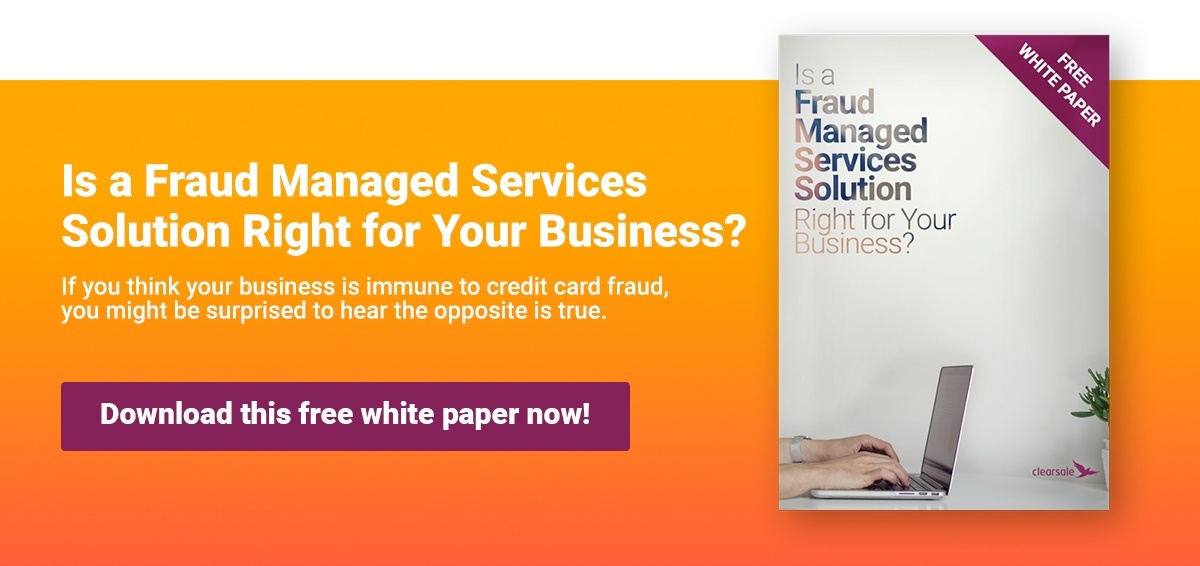Fraud Risk Profile for Online Fashion Retailers
Apparel, footwear and accessories make up the most popular e-commerce category in the United States, and globally, revenue surpassed $85 billion in 2015.
Unfortunately, customers aren’t the only ones noticing this growing sector, and fraudsters are quick to take advantage of online fashion retailers. If merchants want to stay profitable, they must stay one step ahead of fraudsters’ increasingly savvy tactics by employing strategies that will minimize their fraud risk while confidently approving legitimate sales.
Why Fraud Is Increasing for Apparel and Accessories Retailers
Fraudsters are finding the online fashion and accessory sectors attractive because:
- Expensive things come in small packages. Fraudsters are loading apparel and accessory merchant gift cards with high dollar amounts and purchasing small, high-value items that are inexpensive to ship.
- Fashion has an in-demand resale market. Luxury brands are always in demand, and fraudsters can easily resell merchandise close to retail price to shoppers looking for a bargain.
- Friendly fraud is increasing. With many subscription-based clothing services entering the market, there’s an increase in chargebacks when customers forget to cancel recurring payments — letting them keep the merchandise and their money. And with the proliferation of companies that let customers rent designer dresses and pricey jewelry by mail, merchants risk friendly fraud from customers who claim they never received an expensive order.
Red Flags Online Fashion Retailers Should Watch For
When it comes to identifying fraudulent transactions, e-commerce fashion retailers must be mindful of the red flags below. While no single indicator is an absolute predictor of fraud, the presence of several warning signs on a single transaction might warrant a second look.
- Expedited shipping. Because fraudsters aren’t using their own money, price is no object when it comes to shipping costs. They’re merely interested in getting the merchandise as quickly as possible so they can resell it.
- Mismatch of billing and shipping addresses. Merchants are right to be wary of nonmatching addresses, as they’re common indicators of fraud. But there are also legitimate reasons — like vacationing or gift-giving — for a customer to ship an expensive order to a different address.
- Package rerouting. Fraudsters often use reshippers to bypass the red flags that arise when billing and shipping addresses don’t match. Some criminals even intercept packages by calling shippers like FedEx, posing as the merchant and requesting a shipment be returned to a store when it’s really being sent to a freight forwarder.
- Nonsensical email addresses. Fraudsters often create single-use emails for their fraudulent orders. Email addresses of seemingly random letters and numbers that come from free services like Hotmail should raise more suspicion than an address like john.smith@yahoo.com.
- International orders. Cross-border commerce is on the rise, which means merchants must be cognizant of the risks of international shipping. While some countries, like China, have a comparatively low incidence of fraud, others – like Romania and Indonesia – are substantially riskier for e-commerce merchants to do business with.
False Declines: Another Risk of the Growing Fashion Market
As the online fashion industry expands into new and foreign markets, overly cautious merchants may choose to decline more transactions than usual — expecting they’ll reduce the fraud risk that’s often associated with growing internationally.
Instead, these merchants are likely declining an increasing number of legitimate orders — and this can be even more financially and reputationally damaging than the fraud itself.
How E-Commerce Retailers Can Minimize Their Fraud Risk
It’s becoming increasingly difficult to separate legitimate customers from fraudsters. But merchants risk increasing customer friction and damaging the customer relationship — not to mention leaving money on the table — if they can’t find ways to do so.
Simple fraud protection strategies are no longer enough to differentiate the legitimate orders from fraudulent ones. Instead, merchants should consider comprehensive strategies like these to reduce their risk of fraud:
- Using device information to ensure multiple suspicious e-mail addresses aren’t accessing a merchant’s site from the same computer
- Monitoring order patterns to see if the same customers are routinely ordering the same expensive items
- Employing IP-based geolocation technology to compare the location of a device with billing and shipping locations
- Implementing a managed services fraud protection solution that will eliminate the strain on internal fraud review teams and improve the customer experience
ClearSale’s Total Guaranteed Protection Solution helps online fashion retailers take advantage of the growing market while simultaneously maximizing revenue and minimizing fraud risk and false declines. Contact us today to learn how our multilayered approach can help you grow your e-commerce business while protecting it against the increased risk associated with online fashion sales.
 Sarah Elizabeth
Sarah Elizabeth
